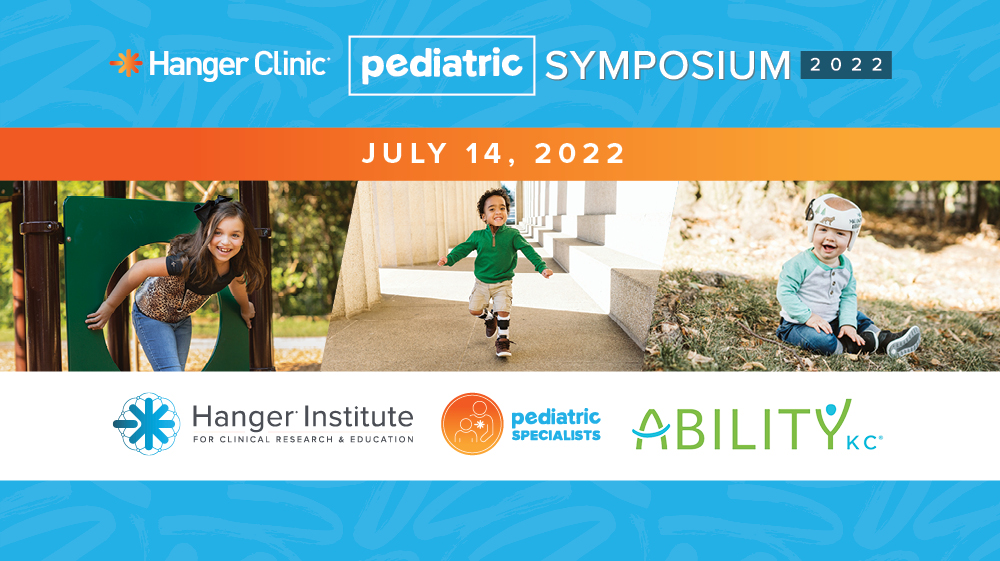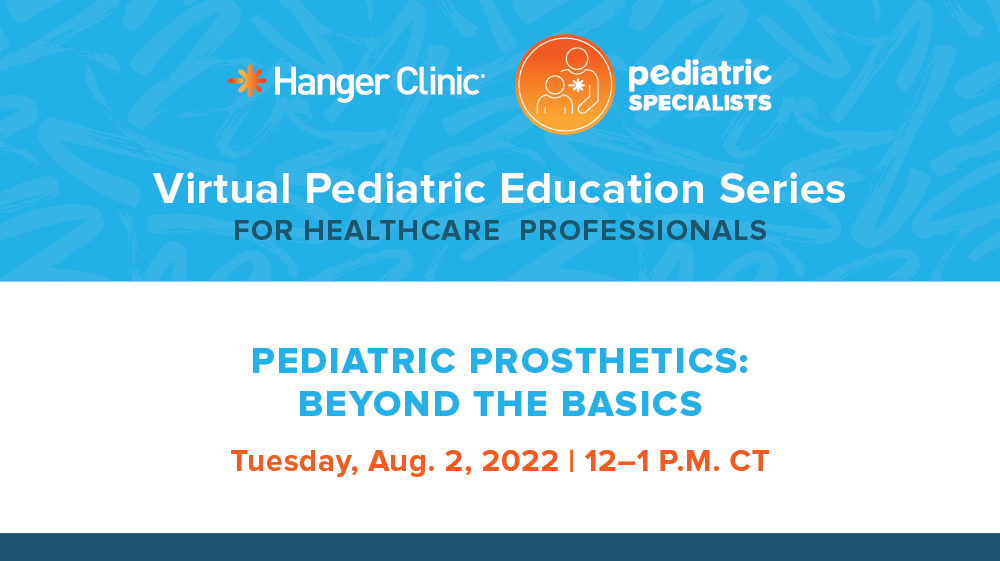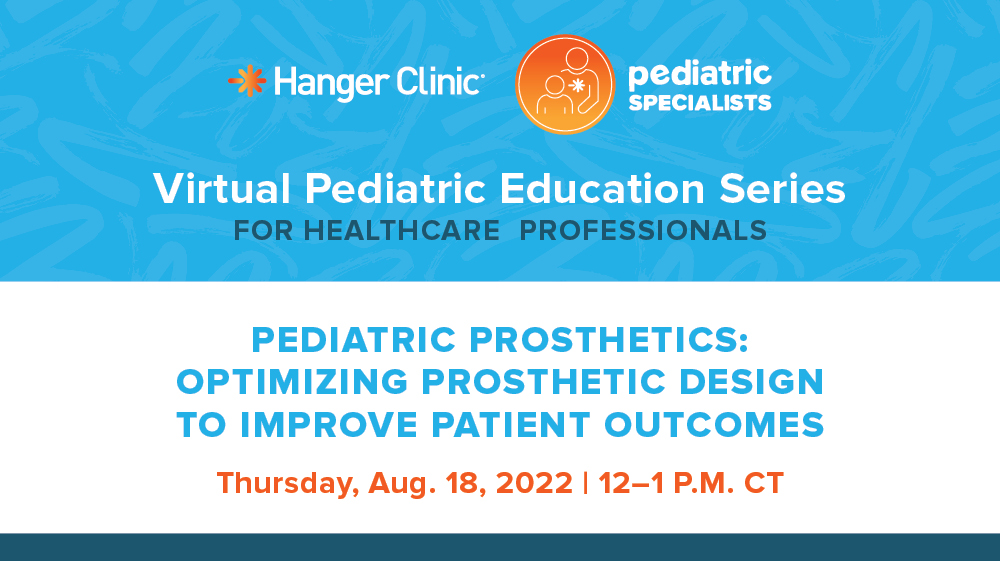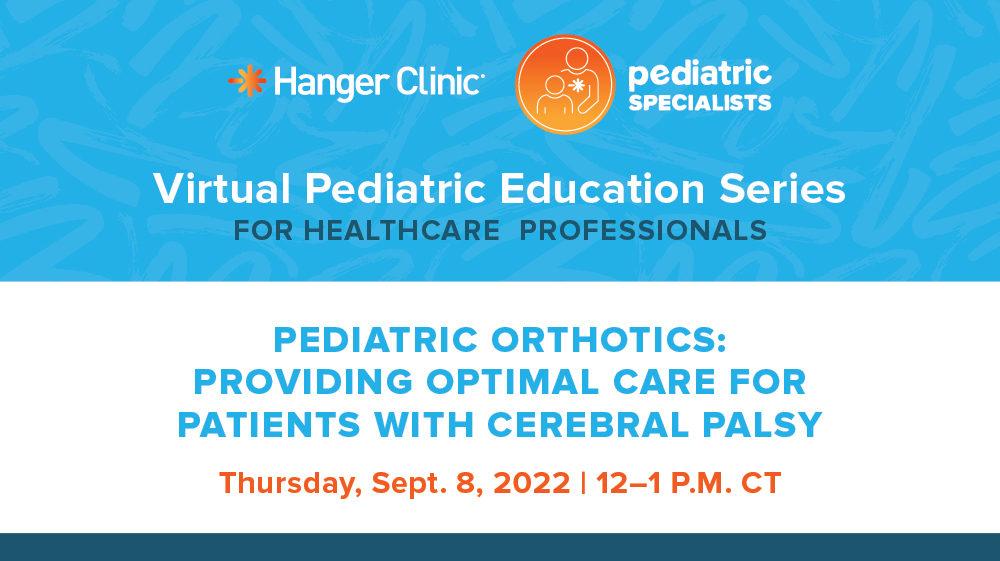Pediatric Educational Series 2022
Pediatric Symposium 2022

This course was a 2.5-hour evidence-based program designed to provide healthcare professionals with insight into the role of orthotic intervention for optimal management of a wide range of pediatric diagnoses. Hanger Clinic teamed up with Ability KC to discuss episodic model care. In addition, with the use of patient cases, optimal orthotic interventions were outlined for both occupational and physical therapy patients. Through collaboration across multidisciplinary teams, patient’s outcomes can improve.
Key Takeaways:
- An interdisciplinary team is key to successful management of a variety of pediatric populations requiring orthotic intervention.
- Episodic models of care result in “Better adherence, motor function improvement, and parent perspective of child attaining goals increased with intensive, short duration, episodic PT.” (Hanson et al 2015)
- OT goals for pediatric UE orthotic interventions include:
- Improved function and awareness
- Maintained or improved ROM
- Prevent contractures and secondary complications
- PT goals for the pediatric LE Orthotic intervention include:
- Increase in ROM prior to orthotic intervention
- Maintenance of ROM and strength is key in orthotic success
Session 1, Pediatric Prosthetics: Beyond the Basics

This 1-hour course focused on pediatric lower limb prosthetics and aimed to provide a brief overview of lower limb prosthetics design and key factors when addressing the unique needs of each child with limb loss. Participants learned how to assess rehabilitation goals as children reach developmental milestones, including how to classify activity levels, accurately document care needs that support the unique prosthetic rehabilitation plan, and identify age appropriate milestones to provide patients with successful outcomes.
Key Takeaways:
- Children are NOT small Adults and developmental milestones are important considerations when treating and planning prosthetic interventions.
- When considering prosthetic design and needs, assume children with limb loss will want to do…EVERYTHING. They tend to lean towards function over stability and will test the limits of their componentry.
- Collaboration between allied health partners, prosthetists, their patients and parents are key to optimizing outcomes.
Session 2, Pediatric Prosthetics: Optimizing Prosthetic Design to Improve Patient Outcomes

The second 1-hour course in the pediatric lower limb prosthetic series dived deeper into how prosthesis design and componentry selection relates to the patient’s rehabilitation goals. Through interactive case studies, learners had the opportunity to review optimal care pathways for individual cases as the speaker walked through pediatric specific timelines from evaluation to delivery.
Key Takeaways:
- When designing prosthetic socket, consideration needs to be given to material make up to keep sockets light weight, yet durable to withstand significant wear and tear.
- Gaining or maintaining independence is a consideration.
- At younger ages suspension should allow for parents to don the prosthesis but not allow a child to easily remove.
- At ages where children can independently don, they should also be able to remove it as this can signal fit issues if the prosthesis is frequently removed.
- Milestones play a large role in determine the most appropriate prosthetic feet as these kids grow up and their needs/physiology changes.
Session 3, Pediatric Orthotics: Providing Optimal Care for Patients with Cerebral Palsy

This 1-hour course covered a basic overview of cerebral palsy, sample treatment plans, and how to set optimal goals for each individual patient. The course provided healthcare teams with the understanding of how to translate a prescription into the proper orthosis while providing insights into Rx interpretation, design, fabrication, and fitting of the lower limb orthoses.
Key takeaways:
- Among children with cerebral palsy, AFOs:
- Are indicated to increase gross motor function.
- May have an effect on ankle power generation during ambulation.
- Among Children with spastic cerebral palsy and equinas, AFOs:
- Are indicated to increase ankle dorsiflexion during swing phase and at initial contact.
- Are indicated to increase stride length and gait speed and decrease cadence, with greater impacts observed in children with hemiplegia than in diplegia.
If you still need to submit for CEU credits:
Submit Your Feedback & Complete the Attestation Here
Interested in learning more about collaborative partnership opportunities with Hanger Clinic’s Pediatric Specialists? Learn More
CEU Credits
If you still need to submit for CEU credits, complete the feedback and attestation form.
Partnership Opportunities
Explore collaborative partnership opportunities with Hanger Clinic’s Pediatric Specialists
